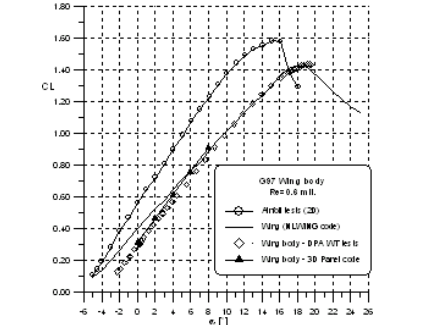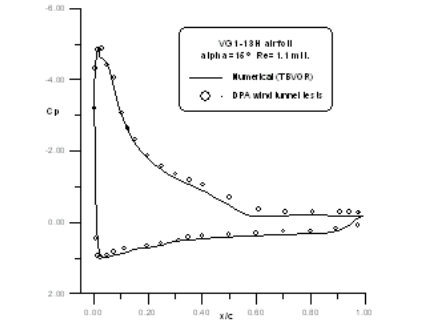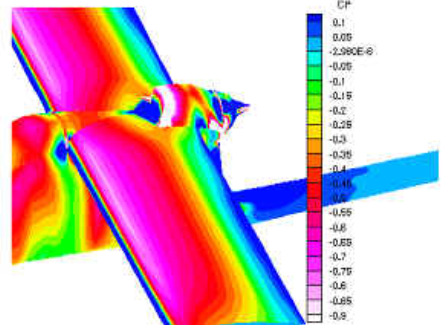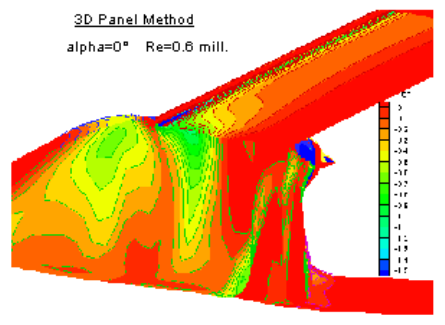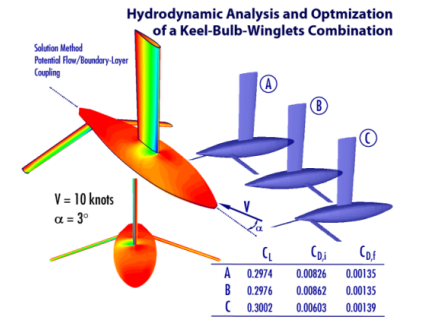
|

|
|
|
Numerics
In the last years some numerical codes for the analysis and design of two-dimensional (airfoils) and three-dimensional bodies have been developed. In particular the research has been focused on airfoil design and analysis at high angles of attack and at low Reynolds numbers. A numerical code named TBVOR and devoted to mono- and multi-component airfoil aerodynamic prediction up to stall and post-stall, has been developed. Some of the developed numerical codes are based on simple and reliable techniques such as panel methods coupled with integral boundary layer. Codes for wing maximum lift analysis, wing induced and viscous drag prediction have been developed. Several codes for aerodynamic analysis and drag prediction of bodies and fuselages have been set up. Expertise in the use of 3D panel codes for complete aircraft aerodynamic analysis has been matured.
Numerical activities:
-
Numerical prediction of viscous steady and unsteady (attached or separated) flow around two dimensional (mono and multi components) configurations: analysis and design capability.
Examples: airfoils, wind-turbine airfoils, bridge sections, etc. Numerical prediction of viscous steady flows around three dimensional configurations: analysis and design capability.
Examples: wing, winglets, wing-body junctions, fuselages and axisymmetric bodies, whole aircrafts, sailboat keels.Aircraft aerodynamics, stability and dynamics: AEREO and JDYNASIM codes
Horizontal and vertical axis wind turbine design and aerodinamics
Design and Optimization of Hydro turbine for tydal energy
Viscous steady and unsteady aerodynamic characteristics of airfoils in transonic flow.
Wing analysis and induced drag evaluation at high angles of attack.
Aerodynamic prediction, design and performances
Sails aeroelastic calculations.
